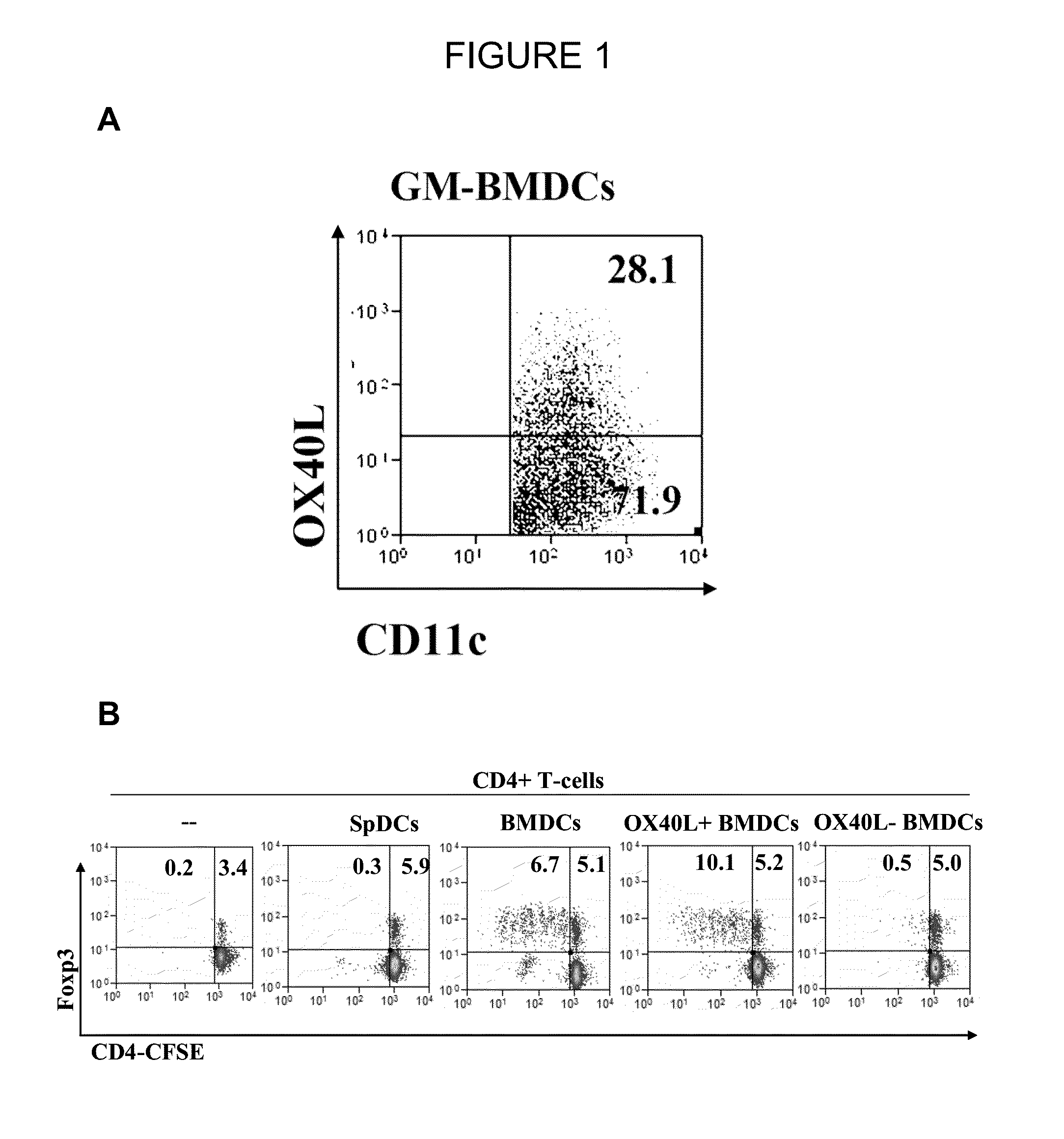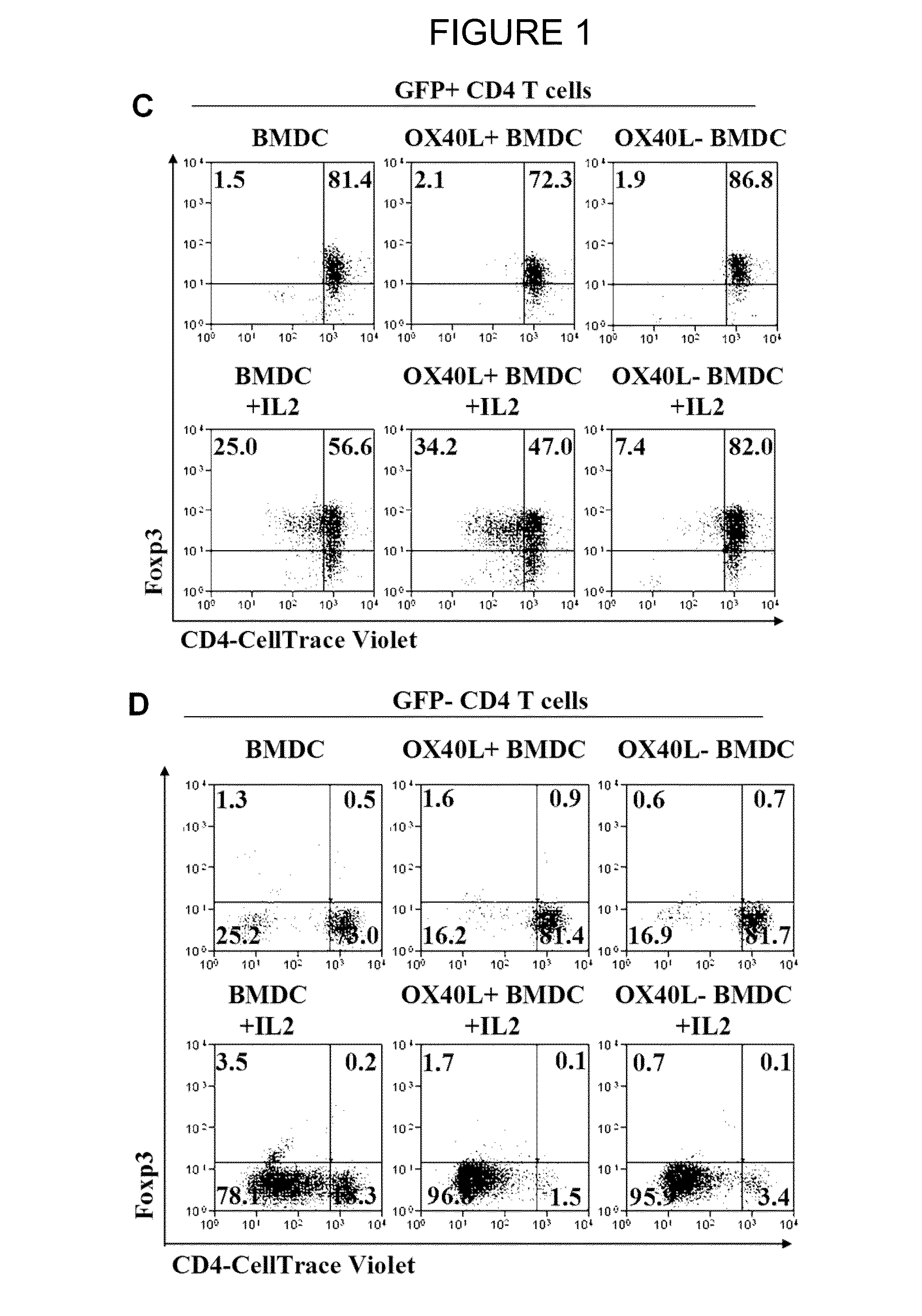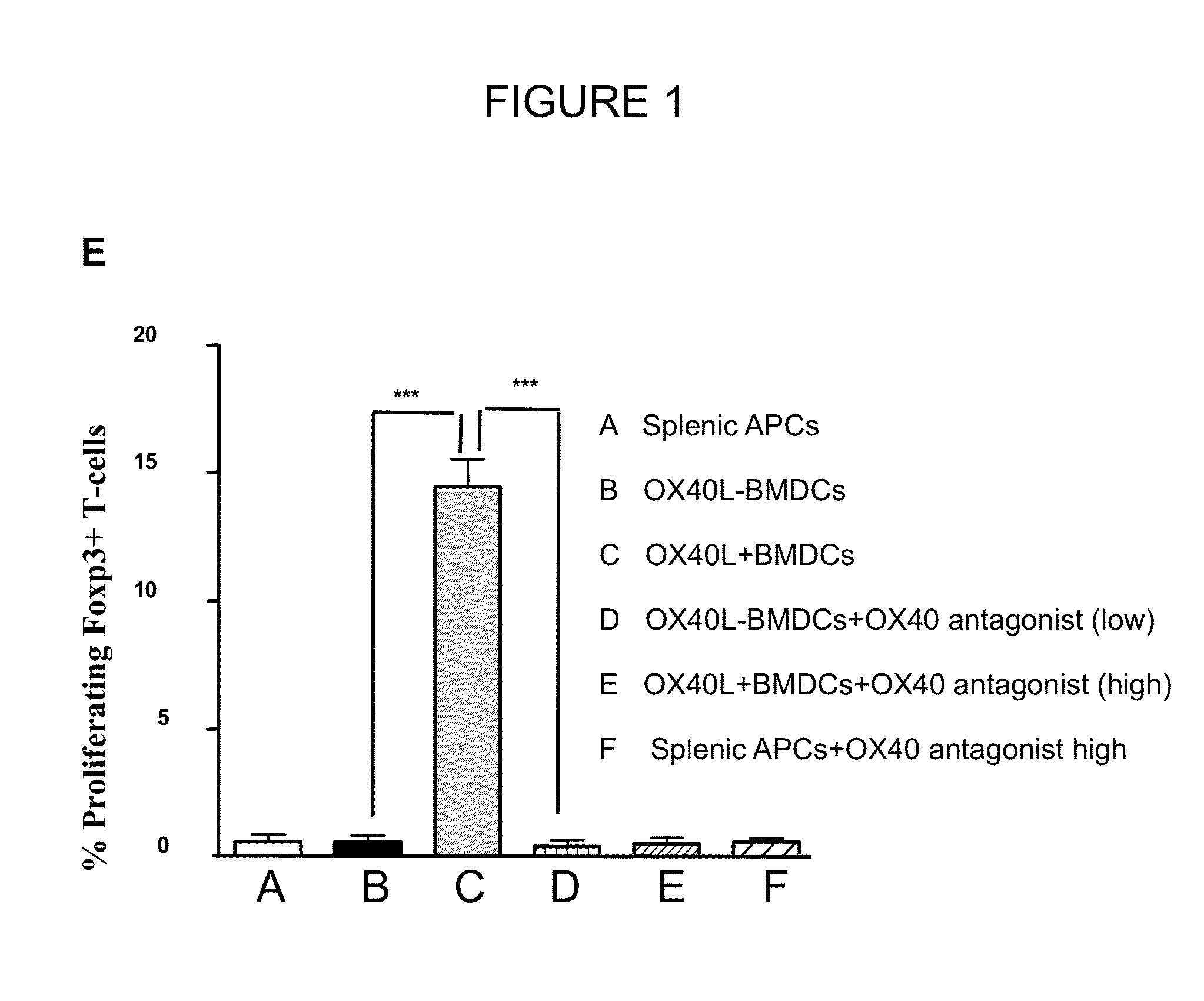T-REG Cell Expansion
a technology of t-reg cells and t-regs, applied in the field of immunology, can solve the problems of relative difficulty in obtaining large numbers of t-regs, the therapeutic utilization of t-regs, etc., and achieve the effect of increasing the percentage of foxp3 t-regs
- Summary
- Abstract
- Description
- Claims
- Application Information
AI Technical Summary
Benefits of technology
Problems solved by technology
Method used
Image
Examples
example 1
OX40L is Necessary but not Sufficient for the Expansion of Tregs Mediated by GM-BMDC
[0060]A blocking antibody against OX40L demonstrated a dose-dependent abrogation of Treg proliferation by GM-BMDC (8), which was restored upon addition of a soluble OX40 agonist. In a typical 7-day bone marrow culture with GM-CSF, ˜30% CD11c+ GM-BMDCs were OX40L+ (FIG. 1A). To determine if OX40L-induced signaling was sufficient for the expansion of Tregs, co-cultures with sorted populations of OX40L+ and OX40L− GM-BMDCs with naive CD4+ T-cells were established. Only OX40L| GM-BMDC drove the proliferation of Foxp3| Tregs (10.1±0.6%) relative to OX40L− GM-BMDC (0.5±0.1%, p=0.002) (FIG. 1B).
[0061]To specifically address the role of OX40L+ GM-BMDCs on Foxp3− Tregs, Foxp3-GFP transgenic mice were used. Co-cultures of sorted OX40L| and OX40L− GM-BMDCs (FIG. 1) with sorted and Cell-Trace Violet labelled CD4+GFP+ (FIG. 1C) or CD4− GFP− (FIG. 1D) T cells isolated from Foxp3-GFP mice (FIG. 1), in the presence ...
example 2
Surface Bound Ligands Other than the B7 Family Co-Stimulatory Molecules are Involved in GM-BMDC Induced Tree Expansion
[0063]Co-cultures of CD4− T-cells and DCs in trans-well plates were established to determine if, in addition to OX40L expressed on GM-BMDC, co-signaling by a soluble factor from, or a surface bound molecule on, GM-BMDC is required for Treg expansion. Splenic APCs and CD4− T-cells along with an OX40 agonist were physically separated from GM-BMDC cultured in trans-wells, which allowed for free exchange of soluble factors in culture medium. If soluble factors from GM-BMDC were contributing to Treg expansion, those factors would be expected to cross the trans-well barrier and aid in Treg expansion in the presence of OX40 agonist and splenic APCs. However, there was little or no proliferation of Tregs (0.2±0.1%) in the trans-well when compared to CD4+T-cell-GM-BMDC co-cultures (10.3±0.7%) (FIG. 2A). These results suggested that in addition to OX40L, co-signaling by other ...
example 3
Jagged-1 Mediated Notch Signaling is Involved in GM-BMDC Induced Proliferation of Foxp3+ Tregs
[0065]To test whether Notch signaling was involved in ex vivo Treg proliferation, S-2188, a γ-secretase inhibitor (GSI) that blocks Notch signaling was added to the GM-BMDC / T-cell co-cultures. Blocking Notch signaling with S-2188 completely abrogated Treg proliferation (1.5±0.3%-0.3±0.1%) in a dose dependent manner (5-10 μM) compared to proliferation of Tregs in untreated cultures (11.1±1.0%, p<0.001) (FIG. 3A). To assess whether this difference was attributable to a difference in cell viability, co-cultures were stained with propidium iodide (PI) and analyzed by FACS for cell death; S-2188 treatment did not affect cell survival (FIG. 3B). The effect of treating the cells with R04929097, another GSI known to be effective at lower doses, at different concentrations (250 nM-5 μM) (FIG. 8) was also tested. While co-cultures of CD4+ T-cells with GM-BMDCs alone resulted in robust proliferation (...
PUM
| Property | Measurement | Unit |
|---|---|---|
| concentrations | aaaaa | aaaaa |
| concentrations | aaaaa | aaaaa |
| temperature | aaaaa | aaaaa |
Abstract
Description
Claims
Application Information
 Login to View More
Login to View More - R&D
- Intellectual Property
- Life Sciences
- Materials
- Tech Scout
- Unparalleled Data Quality
- Higher Quality Content
- 60% Fewer Hallucinations
Browse by: Latest US Patents, China's latest patents, Technical Efficacy Thesaurus, Application Domain, Technology Topic, Popular Technical Reports.
© 2025 PatSnap. All rights reserved.Legal|Privacy policy|Modern Slavery Act Transparency Statement|Sitemap|About US| Contact US: help@patsnap.com



